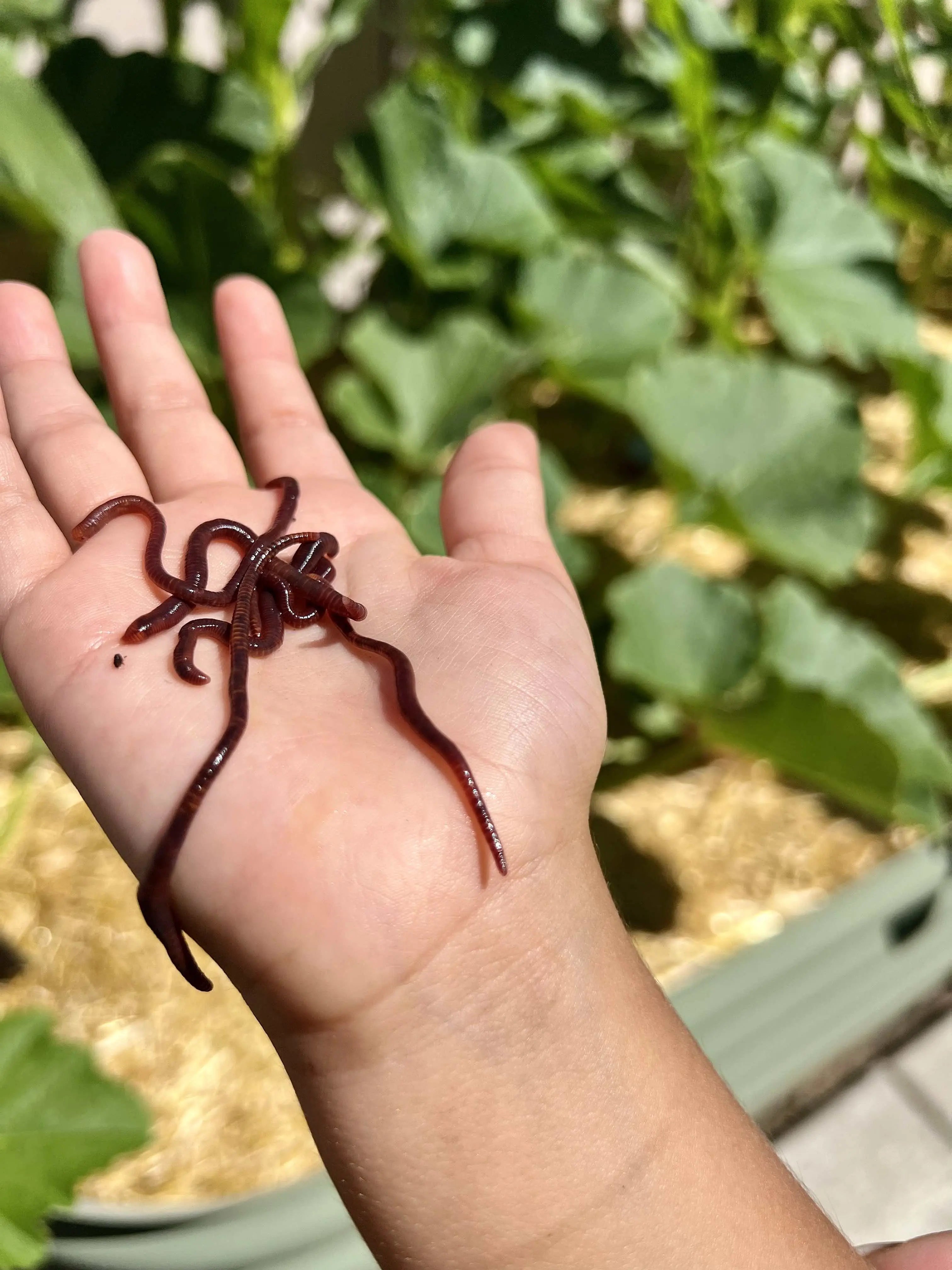Red Wigglers 101: Every Little Thing You Need to Know for Thriving Gardens
Red wigglers, or Eisenia fetida, play an important role in lasting horticulture methods, serving as efficient decomposers that convert organic waste into beneficial vermicompost. Understanding their habitat, nutritional preferences, and the myriad advantages they supply can transform your gardening strategy.
Comprehending Red Wigglers

Red wigglers grow in atmospheres rich in natural material and dampness. Red Wiggler Express. They have a distinct digestion system that allows them to process food scraps swiftly, eliminating castings that are packed with necessary nutrients such as nitrogen, phosphorus, and potassium. These castings improve soil structure, boost water retention, and foster beneficial microbial activity, all of which add to durable plant wellness
Furthermore, red wigglers can survive in diverse conditions, making them adaptable to different horticulture techniques, consisting of interior and outdoor composting systems. Their ability to take in big amounts of natural waste daily positions them as useful allies for both home garden enthusiasts and business farmers. By including red wigglers right into horticulture initiatives, one can significantly enhance soil fertility and support sustainable gardening practices.
Ideal Habitat for Red Wigglers
Developing an optimum setting for red wigglers is essential for optimizing their composting capacities and total health and wellness. Red wigglers prosper in wet, dark, and well-aerated environments, which carefully resemble their native environments in ground cover and decaying natural issue. An appropriate environment ought to supply a temperature level array in between 55 ° F and 77 ° F(13 ° C to 25 ° C), as severe temperature levels can emphasize or hurt the worms.
The bed linen product, such as shredded newspaper, cardboard, or coconut coir, ought to be kept damp but not overly damp, as extreme wetness can cause anaerobic problems detrimental to worm health and wellness. Additionally, a pH level between 6.0 and 7.5 is perfect, making sure a well balanced atmosphere.
Appropriate aeration is just as vital; it enables for oxygen circulation and avoids the build-up of damaging gases. A container or container created for vermicomposting should have water drainage openings to eliminate excess dampness and promote air movement. Routine monitoring of these problems is important for keeping a prospering red wiggler population, inevitably enhancing their performance in breaking down natural waste and improving yard dirt.
Dietary Needs and Preferences

Red wigglers display specific choices; they are specifically keen on softer, decomposing materials over more difficult or more fibrous compounds. It is important to stay clear of feeding them citrus peels, onion, and garlic in huge amounts, as these can be harmful. Additionally, meat, dairy, and oily foods should be excluded, as they can attract insects and create unpleasant odors.
(Red Wiggler Express)Environment-friendly products, such as vegetable scraps, give nitrogen, while brown products, like cardboard and dried out fallen leaves, supply carbon. By catering to their dietary needs, gardeners can promote a growing populace of red wigglers in their garden compost systems.
Advantages of Making Use Of Red Wigglers
The amazing benefits of using red wigglers in horticulture extend far beyond their function in composting. These flexible microorganisms add dramatically to soil health, improving nutrient accessibility and advertising microbial task. By freshening the dirt as they delve, red wigglers boost drain and root penetration, developing an ideal setting for plant development.
Moreover, red wigglers are effective recyclers of organic waste, transforming it into nutrient-rich castings that act as an exceptional natural plant food. These castings have valuable bacteria and important nutrients, such as nitrogen, phosphorus, and potassium, which are essential for plant advancement. The slow launch of nutrients from worm castings makes sure a stable supply, decreasing the danger of nutrient leaching and advertising sustainable horticulture practices.
Furthermore, the visibility of red wigglers can assist subdue soil-borne plant illness. Their digestive system processes generate compounds that prevent unsafe microorganisms, therefore improving plant health. Ultimately, making use of red wigglers cultivates an extra sustainable horticulture approach by minimizing reliance on chemical fertilizers and promoting a closed-loop system, where waste is changed right into beneficial resources. In general, including red wigglers right into gardening methods uses a wide variety of ecological and farming benefits.
(Charlotte NC Worms For Sale)
Composting With Red Wigglers

To start a successful vermicomposting system, select an ideal container with appropriate air flow and water drainage. The excellent atmosphere for red wigglers consists of a wet, dark setting with temperatures between 55 ° F and 77 ° F. Begin by layering shredded paper, cardboard, and food scraps, guaranteeing a balanced mix of carbon and nitrogen-rich products.
Red wigglers thrive on veggie peels, fruit scraps, coffee grounds, and eggshells, while staying clear of meat, dairy, and oily foods that can draw in pests. Regularly monitor dampness degrees; the bedding must be damp yet not soaked. Harvest worm spreadings every few months by dividing the worms from the compost, which can then be made use of straight in gardens or stored for later use.
Carrying out vermicomposting not just reduces land fill waste but also improves yard dirt, promoting healthy and balanced plant development and sustainable gardening techniques. Accept this eco-friendly method to enhance your horticulture endeavors.
Final Thought
In recap, red wigglers are crucial microorganisms for enhancing yard productivity through efficient composting. Their specific habitat needs, nutritional preferences, and considerable benefits contribute to lasting gardening practices. By making use of red wigglers, garden enthusiasts can dramatically enhance dirt top quality and nutrient availability, cultivating much healthier plant development. click Embracing the method of vermicomposting not just sustains waste decrease yet also promotes an eco-friendly equilibrium within yard environments, inevitably causing flourishing and durable yards.